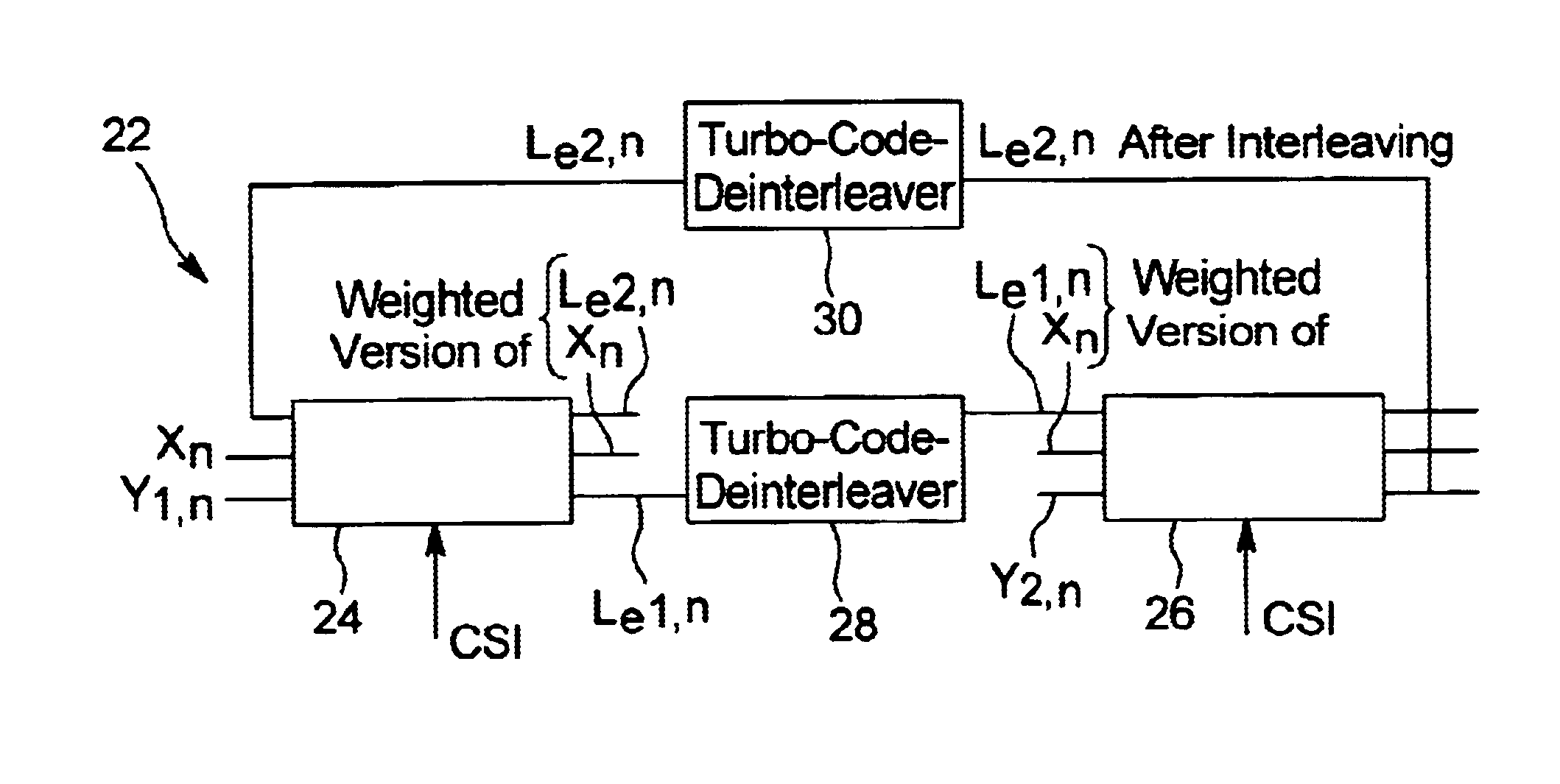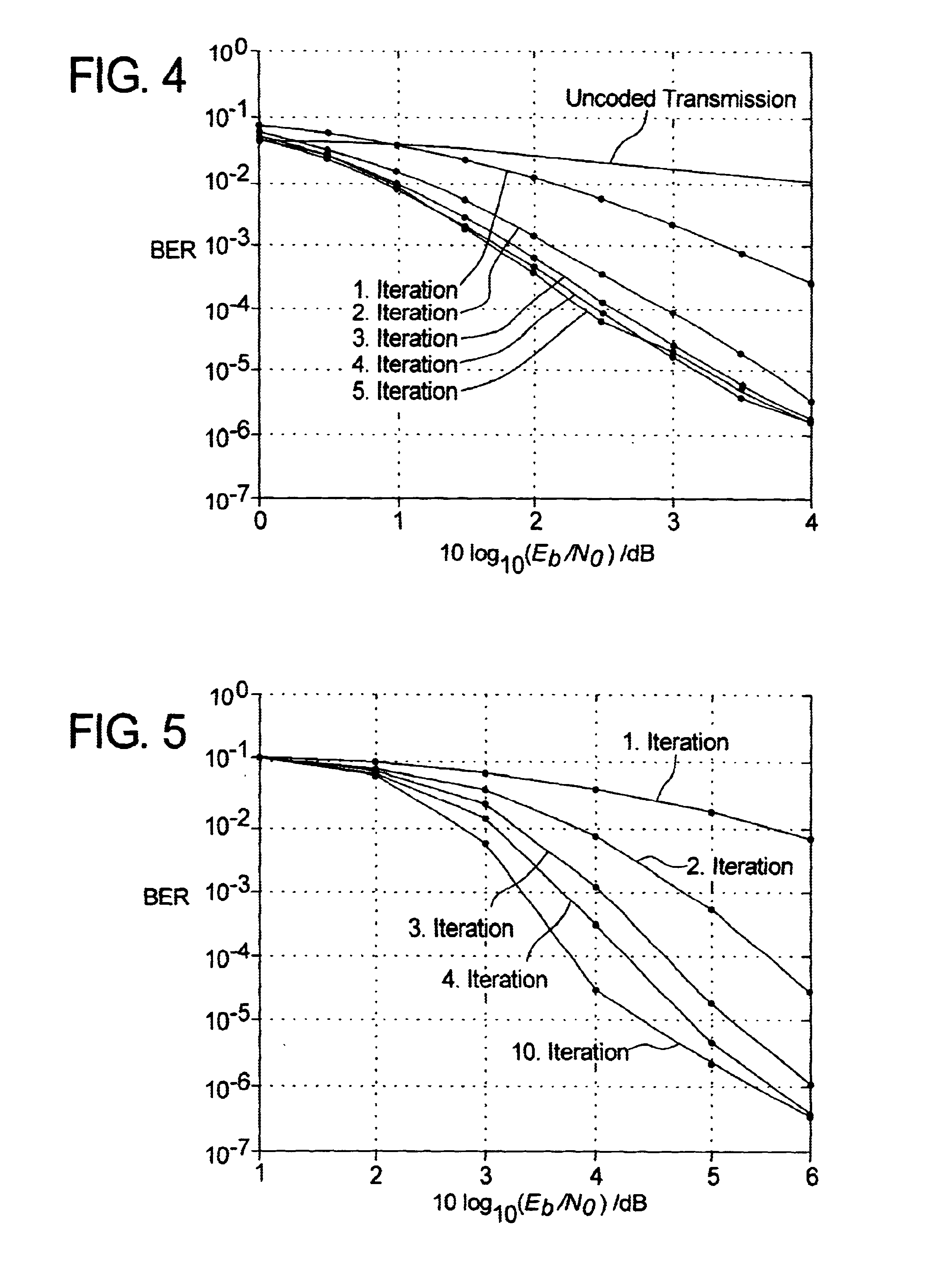Method for transmitting data in a digital transmission system given a packet-switched service
a digital transmission system and packet switching technology, applied in data switching networks, frequency-division multiplexes, coding, etc., can solve the problem of additional redundancy bits with which it is not possible to transmit information, error-detecting coding generates additional redundancy bits
- Summary
- Abstract
- Description
- Claims
- Application Information
AI Technical Summary
Benefits of technology
Problems solved by technology
Method used
Image
Examples
Embodiment Construction
With a view to an economical use of hardware, it should be possible to use the ECC circuit optimally universally, while the ECC configuration should permit a high flexibility based on software control. The RCPTC used here makes this possible, because it includes the necessary flexibility. The RCPTC can be generated with the turbo-coder 2 illustrated in FIG. 1. The turbo-coder 2, includes N.sub.e =2 binary, recursive, systematic convolution coders 4,6 (RSC) having a small constraint length, for instance between 3 and 5, which are connected in parallel fashion upon utilization of a turbo-interleaver 8. The input sequence u is fed to the coder 4 (RSC, code 1) and via the turbo-code interleaver 8 to the coder 6 (RSC, code 2) as well as to a dotting / multiplexer 10. The dotting / multiplexer 10 gets an additional input C1 from the coder 4 and an additional input C2 from the coder 6. The output of the dotting / multiplexer 10 is the output sequence b.
In the turbo-coder 2, the minimal code rate...
PUM
 Login to View More
Login to View More Abstract
Description
Claims
Application Information
 Login to View More
Login to View More - Generate Ideas
- Intellectual Property
- Life Sciences
- Materials
- Tech Scout
- Unparalleled Data Quality
- Higher Quality Content
- 60% Fewer Hallucinations
Browse by: Latest US Patents, China's latest patents, Technical Efficacy Thesaurus, Application Domain, Technology Topic, Popular Technical Reports.
© 2025 PatSnap. All rights reserved.Legal|Privacy policy|Modern Slavery Act Transparency Statement|Sitemap|About US| Contact US: help@patsnap.com



